GENERAL DATA
Plant Parts: Root, Stem, Leaf, Flower, Fruit, Seed and Sap
Cultivation mode: Wild collection
In manufacturing: Pharmaceutical, Textile, Tire industry, Shoemaking, Insecticide, Gloves making, Balloon making, Sport balls making, Paper making
In food: Its seeds powder is used as a spice
🌿 Industries That Use Calotropis Latex
(From Calotropis procera & Calotropis gigantea)
The milky white latex extracted from Calotropis species is a potent and multifaceted natural material used in traditional medicine, agrochemicals, biotech, and veterinary care. While both C. procera and C. gigantea yield latex, C. procera is more dominant in Middle Eastern, African, and Indian applications.
1. Traditional & Ethnomedicine Industry
Calotropis latex has long been used in Ayurvedic, Unani, and Persian traditional medicine, although it is toxic and must be used cautiously.
Applications:
-
Topical analgesic for joint pain and inflammation
-
Caustic agent for skin tags, warts, and corns
-
Used in digestive purgatives (highly diluted)
-
Anti-parasitic and insecticidal in traditional remedies
✅ Often combined with castor oil, turmeric, or sulfur
⚠️ Note: Toxic if ingested or used improperly
2. Pharmaceutical & Biopharmaceutical Industry
Researchers explore Calotropis latex for its cytotoxic, antimicrobial, and pro-apoptotic effects.
Applications:
-
Source of cardiac glycosides and proteolytic enzymes (calotropain)
-
Studied for anti-cancer, anti-inflammatory, and antimicrobial drug development
-
Potential use in dermatological creams under controlled dosing
✅ Under active investigation in natural drug development
3. Biopesticide & Agrochemical Industry
Calotropis latex is used in organic farming and pest control due to its natural toxicity to pests.
Applications:
-
Biopesticide for aphids, caterpillars, and beetles
-
Latex extracts act as natural fungicide and larvicide
-
Applied as biocontrol agent in sustainable agriculture
✅ Alternative to chemical pesticides in organic fields
4. Veterinary & Ethnovet Industry
Traditionally used in rural animal care.
Applications:
-
Wound dressing and hoof treatments
-
Applied externally to treat maggot infestations
-
Used with ash or turmeric for hoof rot and fungal infections
⚠️ External use only; internal use in animals is toxic
5. Industrial & Rubber Processing Industry
Because of its sticky, coagulating nature, latex is used in traditional adhesives and low-grade rubber formulations.
Applications:
-
Added to traditional sealants and binding pastes
-
Historically used as insulating material in some regions
-
Studied as a biopolymer source in developing economies
6. Ethnobotanical & Cultural Uses
Calotropis latex plays a symbolic and functional role in some cultures.
Applications:
-
Used in religious rituals in India and Iran
-
Leaf and latex mixtures applied in folk healing and ritual medicine
-
Featured in ritual tattooing and scarification practices
7. Scientific Research & Toxicology
Focus areas include:
-
Cardenolide compounds for apoptosis induction
-
Latex protein profiling for bioactivity and allergenicity
-
Studies on toxicity management and nanoformulation potential
✅ Summary of Key Applications
| Industry | Common Uses |
|---|---|
| Traditional Medicine | Topical analgesic, warts/corn remover, purgative (diluted use) |
| Pharmaceutical Research | Anti-cancer, anti-inflammatory, cardiac glycosides |
| Biopesticide & Agriculture | Natural pesticide, fungicide, insect repellent |
| Veterinary & Ethnovet | Hoof care, maggot control, wound care |
| Industrial Use | Traditional adhesives, insulating materials, rubber substitute |
| Ethnobotanical Use | Ritual medicine, spiritual applications, tattooing |
| Scientific Research | Cytotoxicity, enzymatic action, drug discovery |
⚠️ Key Notes & Features of Calotropis Latex
-
⚠️ Toxic in high doses — requires professional handling
-
🌿 Sourced from both C. procera (more common in Iran, Africa) and C. gigantea (Asia-Pacific)
-
💊 Contains cardiac glycosides, proteolytic enzymes, and alkaloids
-
🐛 Natural pest deterrent with proven effectiveness
-
🔬 Used in biomedical research for apoptosis and enzyme activity
🌿 Comparison Table: Calotropis procera vs Calotropis gigantea Latex
| Feature | Calotropis procera | Calotropis gigantea |
|---|---|---|
| Botanical Name | Calotropis procera (Aiton) W.T.Aiton | Calotropis gigantea (L.) W.T.Aiton |
| Common Names | Apple of Sodom, Sodom’s Apple, Giant Milkweed | Crown Flower, Giant Calotropis, Akondo |
| Native Region | North & East Africa, Middle East, Iran, India | South Asia, Southeast Asia, Pacific Islands |
| Plant Height | Up to 4 meters | Taller, up to 6 meters |
| Latex Appearance | Thick, white, slightly sticky | Thinner, more milky-white, less sticky |
| Latex Odor | Strong, acrid, pungent | Milder, faintly bitter aroma |
| Latex Yield | Higher latex yield per incision | Moderate latex yield |
| Key Chemical Compounds | Calotropin, calactin, uscharin, proteases | Gigantin, giganteol, uscharin, cardenolides |
| Toxicity Profile | Strongly toxic, more caustic | Milder toxicity, slightly safer topically |
| Pharmaceutical Interest | High – anti-inflammatory, cytotoxic, antimicrobial | Moderate – antioxidant, anti-inflammatory |
| Traditional Uses | Wart/corn remover, joint pain relief, pest control | Ritual use, wound dressing, digestive stimulant |
| Pesticide Use | Stronger effect, used as larvicide and fungicide | Milder pest repellent activity |
| Veterinary Uses | Hoof treatment, mange & external parasites | Similar use, but less aggressive on skin |
| Ethnobotanical Relevance | Common in Persian, Arabian, and African remedies | Important in Indian, Thai, and Balinese traditions |
| Environmental Tolerance | Arid, desert conditions – drought resistant | Tropical/subtropical – more moisture-tolerant |
| Industrial Potential | Adhesives, natural rubber, insulation material | Biopesticide, spiritual items, low-grade rubber |
| Color of Dry Latex | Yellow to brown (hardens like resin) | Pale yellowish to whitish crust |
| Availability in Iran | Very common in southern and central regions | Rare or absent natively in Iran |
🧪 Summary Insights
-
C. procera latex is more caustic, concentrated, and medicinally potent, but also more toxic.
-
C. gigantea latex is gentler with wider use in cosmetic, spiritual, and topical remedies across Asia.
-
Both are milky latex-producing perennials, rich in cardiac glycosides, proteolytic enzymes, and bioactive alkaloids, yet differ significantly in geography, chemistry, and handling risks.
🌸 Industries That Use Dried Calotropis Flowers
(From Calotropis procera & Calotropis gigantea)
Calotropis flowers—once considered spiritually sacred and medicinal—are now gaining recognition in traditional healing, natural dyeing, ethnopharmacology, and agriculture.
1. Traditional Medicine & Ethnobotany
Calotropis flowers have deep roots in traditional Indian, Persian, and African healing systems.
Applications:
-
Used in Ayurvedic and Unani formulations as a digestive stimulant and expectorant
-
Incorporated in poultices for swelling and joint pain
-
Sometimes powdered and combined with ginger or pepper for fever, cough, and bronchitis
-
Flowers soaked in oils for nervous system tonics
✅ Common forms: sun-dried petals, powdered flowers, herbal boluses
⚠️ Mild toxicity requires caution in preparation and dosage
2. Pharmaceutical & Nutraceutical Research
Calotropis flowers are under research for their polyphenol and flavonoid-rich profiles.
Potential bioactivities:
-
Antioxidant and anti-inflammatory effects
-
Antimicrobial properties against Gram-positive bacteria
-
Source of alkaloids and cardiac glycosides (though weaker than latex)
✅ Being studied as part of plant-based therapeutic compounds
3. Herbal & Wellness Tea Industry (Emerging Use)
Though not mainstream, some regional blends incorporate dried Calotropis flowers:
-
In detox teas blended with Turmeric or Fennel
-
Used in folk energizing tonics (with proper detoxification processing)
⚠️ Must be thoroughly detoxified or processed before oral use
4. Agricultural & Natural Pest Control
Calotropis flower extracts are used as:
-
Biopesticides—flower powders are sprinkled over stored grains
-
Larvicidal additives in natural farm sprays
-
Pollination decoys in traditional orchard management
✅ Acts as a pest repellent in organic farms and grain storage
5. Natural Dyes & Crafts Industry
Petals of Calotropis, particularly from C. gigantea, yield a soft yellow to olive color in traditional dyeing.
Applications:
-
Used to dye cotton, silk, and wool naturally
-
Mixed with mordants like alum for better fixation
-
Popular in eco-printing and artisanal textiles
✅ Eco-friendly dye option in handmade textiles
6. Cultural & Spiritual Use
Calotropis flowers are symbolically sacred in many Eastern traditions:
-
Offered in Hindu and Zoroastrian rituals
-
Used in garlands and ceremonial wear
-
Dried flowers may be crushed and placed in ritual sachets or incense blends
✅ Summary of Key Applications
| Industry | Common Uses |
|---|---|
| Traditional Medicine | Bronchial relief, digestive support, swelling remedies |
| Pharma & Research | Antioxidant studies, antimicrobial formulations |
| Herbal Teas | Detox or immune teas (after proper processing) |
| Agriculture | Biopesticide, larvicide, grain storage insect repellent |
| Natural Dyeing | Fabric dyes for yellow-olive tones |
| Cultural Use | Rituals, garlands, spiritual blends |
🌿 Key Features of Calotropis Dried Flowers
-
🌸 Collected at maturity, sun-dried, and stored in cool/dry conditions
-
💠 Rich in alkaloids, flavonoids, and mucilaginous compounds
-
⚠️ Mildly toxic—only used in professional herbal formulations
-
🧪 Subject of emerging pharmacological research
-
🌍 Traditionally valued in India, Iran, Nepal, and East Africa
🌿 Industries That Use Calotropis Leaves
(From Calotropis procera & Calotropis gigantea)
The large, thick, and slightly woolly leaves of Calotropis species are known for their anti-inflammatory, antimicrobial, and analgesic properties. They have been widely used in ethnomedicine, biopesticides, veterinary care, and phytochemical research.
1. Traditional & Ethnomedicine Industry
Calotropis leaves have a long history in traditional Persian, Indian (Ayurveda), and African medicine.
Applications:
-
Topical poultices for joint pain, sciatica, and rheumatism
-
Warm compresses for chest congestion and bronchitis
-
Leaf juice mixed with honey or ginger for cough relief (highly diluted)
-
Used in detox foot baths and herbal plasters
✅ Forms: fresh or dried leaves, warm compresses, decoctions
⚠️ Toxic internally if improperly processed or overdosed
2. Veterinary & Ethnoveterinary Medicine
In traditional animal care systems, Calotropis leaves are used for:
-
Wound dressing in cattle and sheep
-
Anti-parasitic wraps for skin infections
-
Anti-bloat remedies when powdered and mixed with salt and herbs
✅ Popular in rural veterinary kits across India, Iran, and Africa
3. Biopesticide & Organic Farming Industry
Due to its bitterness and natural toxicity, Calotropis leaf extract is used as:
-
Insect repellent spray for grains and crops
-
Larvicide and anti-fungal agent in natural agriculture
-
Organic foliar spray for protecting young plants from pests
✅ Safe alternative to synthetic pesticides when properly diluted
4. Pharmaceutical & Biochemical Research
The leaves are rich in:
-
Flavonoids, saponins, and cardiac glycosides
-
Compounds like uscharin and calotropin with proven bioactivity
Studied for:
-
Anti-inflammatory and anti-cancer effects
-
Topical antimicrobial creams and herbal bandages
✅ Early-stage development in natural drug research
5. Textile & Natural Dye Industry
Leaves of Calotropis gigantea can be processed into gray-green to tan fabric dyes when used with natural mordants.
Applications:
-
Eco-printing on cotton and handmade fabrics
-
Experimental use in bio-based textile design
✅ Sustainable resource for slow-fashion and artisan textiles
6. Spiritual & Ritual Use
Used in cultural and religious settings:
-
Placed under pillows for symbolic protection in folk beliefs
-
Burned in ritual smoke cleansing (fumigation)
✅ Especially prominent in Indian subcontinental folk traditions
✅ Summary of Key Applications
| Industry | Common Uses |
|---|---|
| Traditional Medicine | Joint compresses, chest packs, wound healing |
| Veterinary Medicine | Antiseptic leaf wraps, digestive remedies, hoof care |
| Biopesticide Use | Organic insecticide, larvicide, natural crop spray |
| Pharma & Research | Antimicrobial, cytotoxic, and wound healing studies |
| Textile & Dye | Eco-printing, plant-based dyeing, artisan crafts |
| Spiritual/Cultural | Fumigation, folk rituals, symbolic herbalism |
🌿 Key Features of Calotropis Leaves
-
🌱 Thick, oblong, green-gray leaves with a waxy or velvety texture
-
💊 Contains flavonoids, cardenolides, triterpenoids, and tannins
-
🐄 Safe for external animal care, but internally toxic to humans unless processed
-
🛡️ Known for anti-inflammatory, antiseptic, insect-repellent properties
-
🌾 Sustainable option in eco-agriculture and ethnoveterinary systems
🌿 Industries That Use Calotropis Root
(From Calotropis procera & Calotropis gigantea)
Calotropis root is considered the most potent part of the plant in many healing systems. It contains strong bioactive compounds, including cardiac glycosides and alkaloids, and is used in pharmaceutical, traditional, and veterinary industries.
1. Traditional & Ayurvedic Medicine Industry
In Ayurveda, Unani, and Persian medicine, Calotropis root is used with extreme care due to its intense potency.
Applications:
-
Anti-rheumatic formulations (decoctions, dried root powders)
-
Digestive bitters for constipation and bloating (minimal dosages only)
-
Asthma and bronchial support (in decoction form)
-
Root bark paste applied for skin infections and snake bites
✅ Used only after drying and detoxification
⚠️ Must be professionally processed—toxic when fresh or overdosed
2. Pharmaceutical & Phytochemical Research
Calotropis root is under study for its:
-
Cytotoxic effects (anti-cancer potential)
-
Cardiotonic activity (similar to digitalis compounds)
-
Antimicrobial, hepatoprotective, and anti-inflammatory effects
Key constituents:
-
Calotropin
-
Uscharin
-
Calotoxin
-
β-amyrin acetate
✅ Focus of bioactive compound isolation and pharmacognosy studies
3. Veterinary & Ethnoveterinary Applications
In traditional animal care:
-
Dried root powder mixed with salt is used to treat intestinal worms
-
Paste of root bark applied for hoof infections and skin parasites
-
Rarely used in digestive tonics for livestock in very low concentrations
✅ Still used in remote regions of Iran, India, and Africa
4. Insecticide & Organic Agriculture Industry
The powdered root or boiled extract is used as:
-
Pest repellent for grains
-
Natural larvicide for mosquito control
-
Soil treatment for fungal infections
✅ Popular in eco-agriculture and grain storage facilities
5. Ritual & Cultural Use
Calotropis roots—especially the forked ones—are symbolically powerful.
-
Considered sacred in Hindu and Zoroastrian rituals
-
Burned or buried as a spiritual talisman
-
Planted at borders of farms for protection from evil or pestilence
✅ Roots collected during specific moon phases in folk practices
✅ Summary of Key Applications
| Industry | Common Uses |
|---|---|
| Traditional Medicine | Anti-rheumatic, asthma support, digestive stimulant |
| Pharma & Research | Anticancer, cardiotonic, antimicrobial studies |
| Veterinary Medicine | Worm remedies, hoof care, antiseptic pastes |
| Agriculture | Grain pest control, soil disinfectant, larvicide |
| Cultural/Ritual Use | Symbolic root talismans, spiritual rituals |
🌿 Key Features of Calotropis Root
-
🧪 Rich in calotropin, uscharin, cardenolides, and terpenoids
-
🌿 Harvested after full growth phase, air-dried and detoxified
-
⚠️ Toxic when fresh – professional processing is essential
-
🐄 Used in traditional ethnoveterinary practices in Iran, India, and Africa
-
🌍 Holds significance in cultural, medicinal, and agro-industrial sectors
🌿 Comparison of Calotropis Parts: Latex vs Flower vs Leaves vs Root
| Feature | Latex (Milky Sap) | Flowers | Leaves | Root |
|---|---|---|---|---|
| Part Description | Thick white milky sap secreted from stems/leaves | Star-shaped pale lavender or white blooms | Broad, thick, grayish-green leaves | Long, fibrous taproot with rough bark |
| Traditional Uses | Wart remover, anti-asthma compresses, purgative | Fever relief, expectorant, mood enhancer | Rheumatic poultices, asthma wraps, wound healing | Rheumatism, digestive stimulant, asthma decoction |
| Industrial Uses | Ethnomedicine, pharma, biopesticides, veterinary | Herbal tea blends, incense, spiritual products | Veterinary medicine, organic farming, biopesticide, dye | Pharmaceutical research, ethnoveterinary, spiritual use |
| Bioactive Compounds | Calotropin, uscharin, proteolytic enzymes, cardenolides | Flavonoids, polyphenols, quercetin, triterpenes | Cardiac glycosides, alkaloids, triterpenes | Calotoxin, β-amyrin acetate, saponins, glycosides |
| Preparation Forms | Fresh sap (diluted or dried), extract | Sun-dried petals, decoctions, infused oil | Hot compresses, decoctions, powder, sprays | Powdered bark, decoction, paste, tincture (with caution) |
| Pharmacological Action | Anti-inflammatory, vermifuge, proteolytic | Antipyretic, antioxidant, mild sedative | Anti-inflammatory, antimicrobial, respiratory aid | Cytotoxic, anti-inflammatory, hepatoprotective |
| Applications | Wart removal, arthritis, anti-worm, foot ulcers | Herbal baths, aromatic infusions, emotional balance | Topical pain relief, cough compress, insect repellents | Asthma, constipation, skin infections, cattle deworming |
| Spiritual/Ritual Use | Burned as purgative incense | Offered in Hindu & folk rituals | Placed under pillows or doorways for protection | Talismanic use in Zoroastrian and tribal rituals |
| Toxicity Risk | ⚠️ Very High – irritant, corrosive, and orally toxic | ⚠️ Mild – safe in dried form, avoid overuse | ⚠️ Moderate – toxic if ingested raw or in excess | ⚠️ High – must be detoxified before medicinal use |
✅ Summary Highlights
-
Latex = Most potent, used externally with high caution.
-
Flowers = Safest part, used for teas, calming baths, and rituals.
-
Leaves = Highly functional across farming, veterinary, and topical remedies.
-
Root = Most pharmacologically complex, used in traditional medicine and biotech research.
HARVEST CALENDAR
Feb
Mar
Apr
May
Jun
Jul
Aug
Sep
Oct
Nov
Dec
To order French Cotton, please contact us.
About Calotropis
Calotropis is a perennial plant that reaches two meters in height.
The stems of this plant are very thick and their cross section is circular. The young stems of this plant are covered with white hairs.
The leaves are relatively large, broad, oval, often pointed, thick, deep green and have a dusty appearance, without petioles and growing reciprocally. The back of these leaves is paler than the surface.
The stems and leaves of this plant have a lot of sap that comes out if they are broken or scratched.
The flowers grow in bunches, and each flower has five petals, almost rhomboid, drop-shaped, and white, with a pinkish-red inner edge.
The fruits are green, almond-shaped, sometimes oval, and relatively large, and on one side of them, there is a relatively deep groove that opens from the same place after fully ripening.
Inside each fruit, there is an elongated, almost almond-shaped, green tank, which is surrounded by thin, greenish-white filaments. There are brown, wide, and drop-shaped seeds in each tank.
These seeds are concentrated on both sides of elongated and crescent-shaped appendages. On the surface of this appendage there are several very deep longitudinal grooves. At the end of each seed, a set of very thin, soft, and white filaments can be seen, similar to silk threads.
Calotropis Temperament
Leaves and stems are at the third degree of hot and fourth degree of dry. The sap is at the fourth degree of hot and dry.
Calotropis Chemical Constituent
Akundarin, calotropin, usharin, calotoxin, calactin, α-calotropeol, β-calotropeol, β-amyrin, calcium oxalate, glutathione, proteolytic enzyme, caoutchouc.
If you dry the flowers, leaves and branches of the white flower of Calotropis in the shade, eating 6.8 grams of its powder daily with cow’s milk is very useful for body weakness, shortness of breath, phlegm cough, chronic fevers and flatulence.
If you put the cotton-like part of the inside of the fruit on wounds and injuries, it will prevent bleeding and help new flesh to grow.
Calotropis latex improves chronic diseases, headaches, phlegm diseases, shortness of breath, and skin diseases and is used to treat leprosy, psoriasis, scabies, smallpox, boils, spleen stiffness, liver diseases and ascites, and expels ascarid and taenia.
If you soak Ajwain seeds in this sap for several times and dry it in the shade, eating it is effective for shortness of breath and phlegm cough. Rubbing this sap on the bitten area absorbs the poison and relieves the pain. If you keep it with honey in the mouth for few minutes is useful for children’s mouth aphthous ulcer.
If you dip the cotton in this sap and put it on the painful tooth, it will relieve it.
Modifiers
Tallow and milk. If someone gets poisoned by eating its leaves or sap, you should feed him with lots of milk or tallow to make him vomit continuously.
To order Calotropis latex, please contact us.


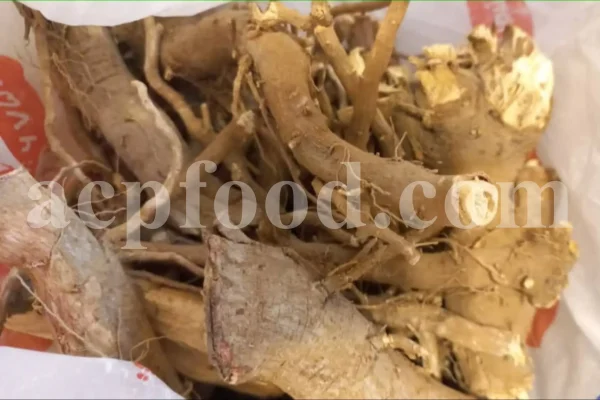
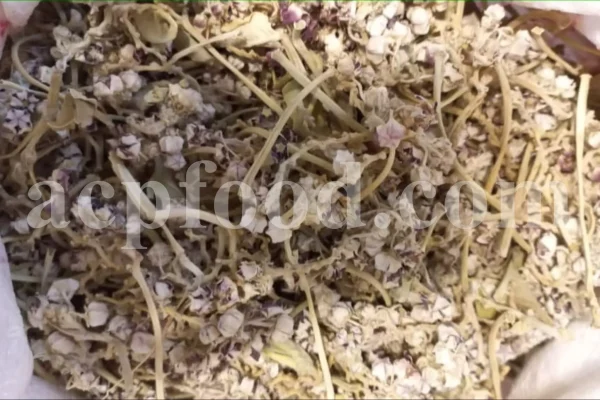

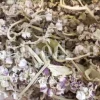


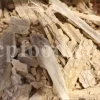

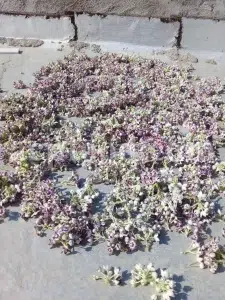

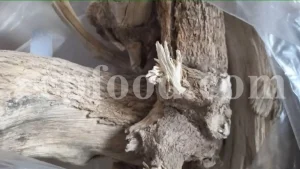

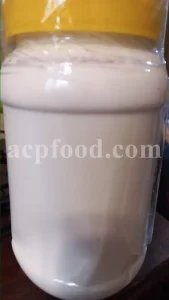


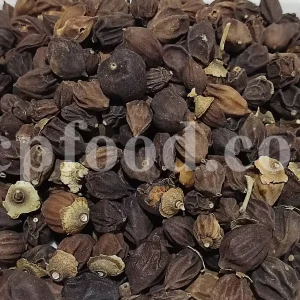

Reviews
There are no reviews yet.